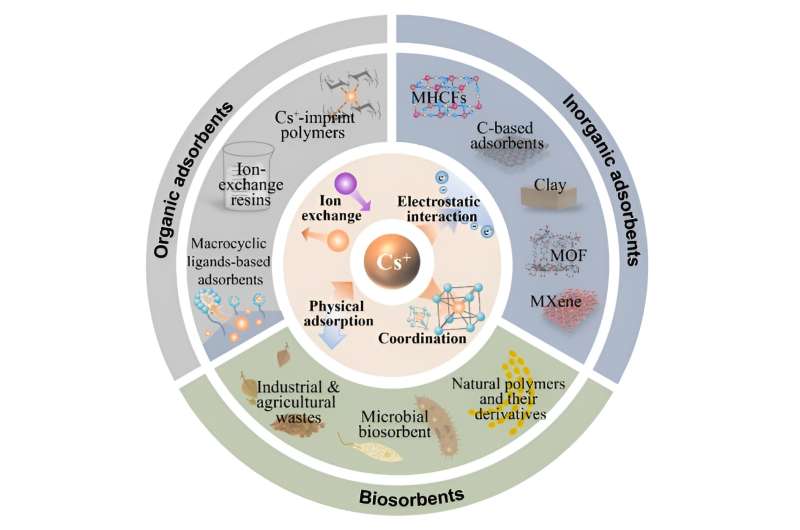This article has been reviewed according to Science X's editorial process and policies. Editors have highlighted the following attributes while ensuring the content's credibility:
fact-checked
proofread
Innovative methods for removing radioactive cesium from wastewater after nuclear disasters

In a recent comprehensive review published in Frontiers of Environmental Science & Engineering on 5 December 2023, researchers from Tsinghua University delve into various innovative methods in the removal of radioactive cesium from wastewater.
Researchers assess several adsorption and membrane separation techniques used in cesium removal in this review. They explore a range of adsorbents, categorizing them into inorganic, organic, and biological materials, and evaluate their efficacy in capturing cesium ions. They also discuss membrane-based separation methods, including reverse osmosis, forward osmosis, and membrane distillation, highlighting their roles in cesium ion separation.
Special attention is given to the methods employed in the cleanup efforts following the Fukushima Daiichi nuclear accident, notably the Kurion/SARRY system, the desalination system, and the Advanced Liquid Processing System (ALPS). Given cesium's unique properties, such as its small hydrated radius and high diffusion coefficient, these methods face significant challenges in effectively isolating cesium ions from water.
Professor Jianlong Wang, the corresponding author of this review, comments, "The task of removing radioactive cesium from wastewater is not just a scientific challenge but a necessity for maintaining ecological balance and public health. The advancements in adsorption and membrane separation technologies represent significant steps forward, yet continuous innovation is essential."
The review concludes that the removal of radioactive cesium is a complex but vital undertaking. Adsorption emerges as a highly effective method for managing low concentrations of radionuclides in large volumes of wastewater, with certain materials showing exceptional adsorption capacity and selectivity. Membrane separation technologies such as reverse osmosis also play a crucial role, especially evidenced in the Fukushima cleanup.
Despite the progress, the review underscores the need for further advancements, particularly in addressing challenges like the treatment of concentrated retention liquid and enhancing the radiation stability of membrane materials. The findings underscore the importance of these technologies in protecting the environment and public health from the hazards of nuclear activities.
More information: Shuting Zhuang et al, Cesium removal from radioactive wastewater by adsorption and membrane technology, Frontiers of Environmental Science & Engineering (2023). DOI: 10.1007/s11783-024-1798-1
Provided by TranSpread





















